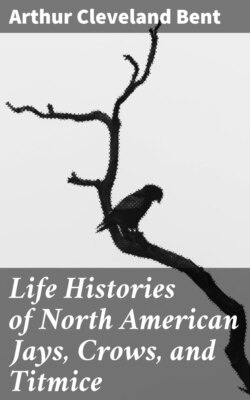Читать книгу Life Histories of North American Jays, Crows, and Titmice - Arthur Cleveland Bent - Страница 26
На сайте Литреса книга снята с продажи.
CYANOCITTA CRISTATA SEMPLEI Todd
SEMPLE’S BLUE JAY
ОглавлениеTable of Contents
My friend John B. Semple collected some blue jays in southern Florida and sent them to the Carnegie Museum. Based on this material from extreme southern Florida, some 11 specimens, W. E. Clyde Todd (1928) described this bird as a new subspecies and named it in honor of Mr. Semple, who collected the type near Coconut Grove. He characterizes it as “similar to Cyanocitta cristata cristata (Linnaeus) of the South Atlantic and Gulf States, but general coloration paler, the under parts white, with less grayish suffusion, the lower throat with less bluish wash, and the upper parts paler and duller blue, with less purplish tone.” He continues:
This new form is as much different from C. c. cristata as the latter is from the northern race C. c. bromia. Its pale coloration stands out well as the two series lie side by side. While occasional specimens from peninsular Florida (north of the Everglades) approximate in their pallor the characters above specified, it is only in the extreme southern part of the State that these characters become sufficiently constant and pronounced to justify giving a name to individuals showing them. * * *
In the average example of cristata the upper parts are “deep dull bluish violet No. 2” of Ridgway (as seen with the eye between the bird and the light), while the pileum is brighter, between “grayish blue violet No. 2” and “dull bluish violet No. 2.” In the new race these parts are respectively “deep madder blue” and “deep plumbago blue.”
Arthur H. Howell (1932) gives the range of this race as “southern and central Florida, from Osceola and Hillsborough Counties south to Key West.”
Its habits seem to be similar in every way to those of the other Florida race.
